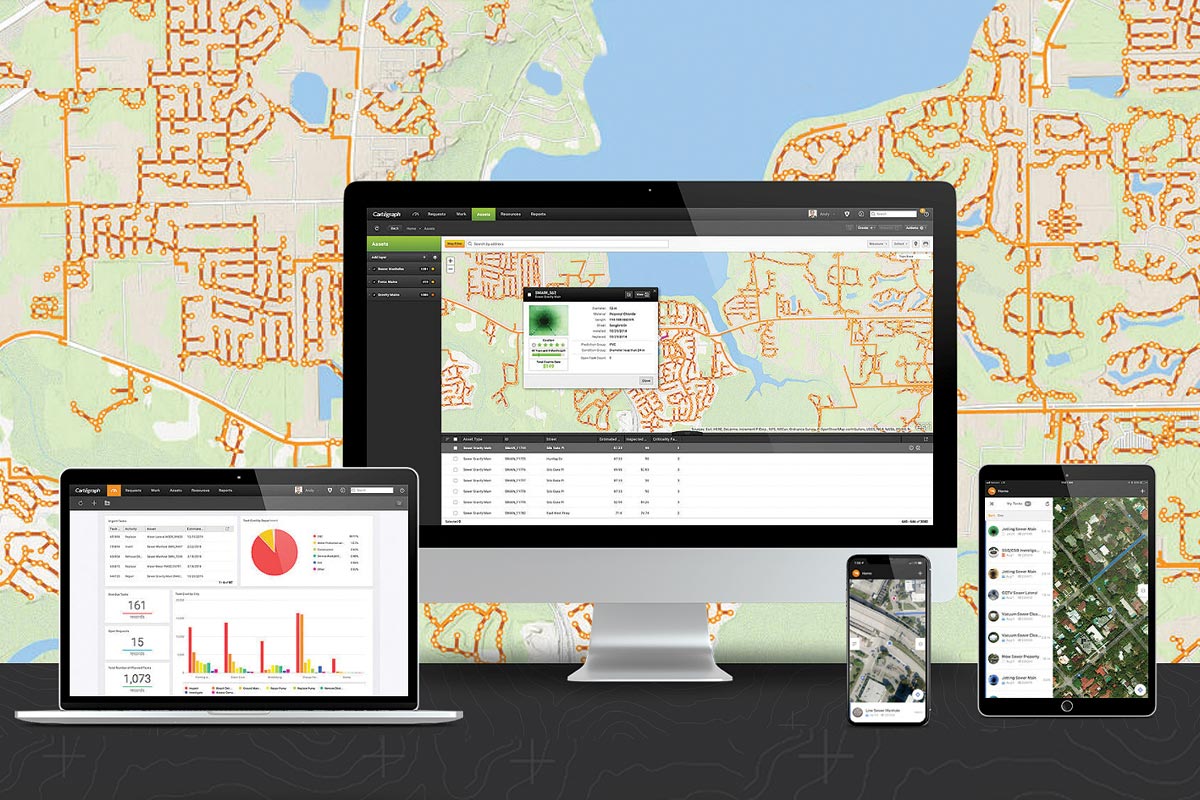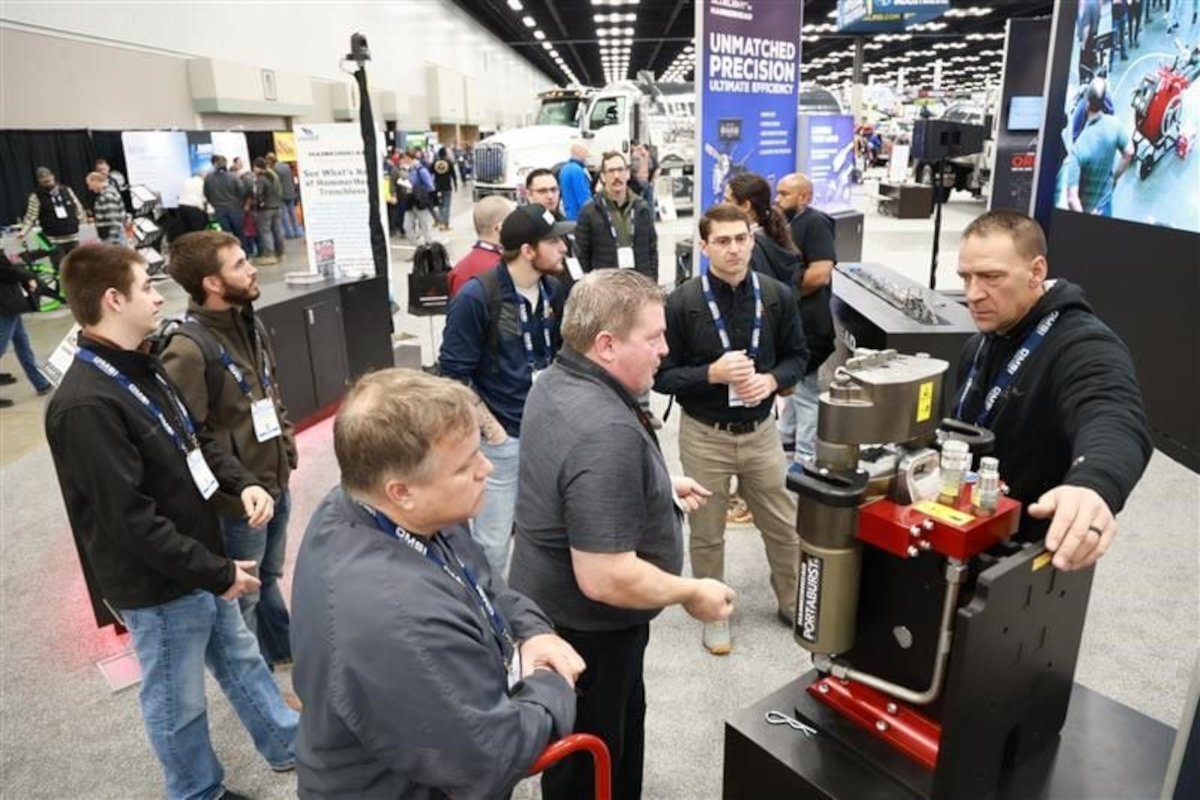Cost-Effective I/I Reduction Programs with SSES and Comprehensive Sewer System Rehabilitation
November 13, 2014
Countless municipalities face consent decrees and regulatory orders to reduce infiltration and inflow (I/I) in their sanitary sewer system. Municipalities will spend millions to achieve the common goals of regaining system capacity through I/I reduction and complying with regulatory mandates.Most municipalities have limited funding dedicated to reducing. Finding and removing excessive I/I is not an easy or inexpensive task. Strategies must be implemented to effectively locate and remove extraneous flow, while also focusing on tactical rehabilitation areas in the collection system.
Municipalities in New England and several others in the Midwest have benefited from years of perseverance and dedicated resources to achieve measurable success in the removal of large percentages of I/I
I/I Program Success Factors
Based upon research from across the United States, CDM Smith has learned how numerous utilities have performed sewer system evaluation surveys (SSES) and implemented rehabilitation programs with little success in I/I reduction.
Failure to reduce I/I is often because of inadequate system knowledge or sporadic application of construction fixes in only a few parts of the sanitary sewer system (i.e., sewer relining) without understanding the water paths, water migration, soil conditions and type of rainfall that contributes I/I to the sanitary sewer system. Private property sources including downspouts, sump pumps and foundation drains have also been ignored.
It is critical to understand I/I water paths, water migration, soil conditions and rain event characteristics that result in I/I events to identify the appropriate evaluation method and define an effective scope for rehabilitation work.
Thorough Field Investigations and
System Evaluation
Conducting thorough SSESs
Conducting thorough SSESs is the first step in identifying critical subareas within a municipality that require aggressive rehabilitation. Figure 1 shows various field investigations that can identify and quantify I/I sources. Once identified and quantified, rehabilitation can then be prioritized.
Lining only the sewer main typically does not achieve significant I/I reduction. If a pipe has active leaks and the line is rehabilitated with a cured-in-place pipe (CIPP) lining, infiltration often finds a new path into the sewer by migrating through service laterals and manholes. A study of several municipalities suggests that I/I reductions of only 10 to 30 percent are achieved when lining pipes only. A comprehensive rehabilitation approach must target the mainline, laterals and manholes if higher I/I reductions are desired.
I/I Reduction Case Studies
The following case studies represent innovative approaches to reducing I/I by understanding the interaction between stormwater, groundwater and sanitary sewer flows.
Livingston-James SSES
In the City of Columbus Livingston-James (Ohio) I/I (LJII) project, CDM Smith and the City realized that in addition to identification of I/I sources, they must also be quantified in such a manner that one could develop a water balance of the system. Various public and private I/I sources were found and quantified using dye testing and with push cameras in the private laterals. Wet weather closed-circuit TV (CCTV) was also performed to observe the sanitary sewers and private laterals to better understand the sources of wet-weather flows and the hydrographs from the flow monitoring program.
A large sampling of houses was conducted and flow estimates made with CCTV video and statistical estimates (e.g., the percent of houses that tested positive and gallons per minute per parcel) were correlated with actual flow monitoring data with a remarkably positive correlation. This data was used to estimate I/I volumes entering each subsystem. Using this approach, it was then possible to understand and defend the amount of flows being recorded for a certain size storm event with known soil conditions and seasonal groundwater levels.

Figure 2 – Infiltration Map from CCTV Investigation
Figure 2 illustrates the locations of infiltration found from the CCTV inspections of the LJII project in the City of Columbus. These infiltration locations, found during systematic cleaning and CCTV operations as part of the project, correlated well with flow monitoring and hydrologic and hydraulic modeling. Such correlations formed the foundation of the various rehabilitation alternatives.
Saugus, Mass., SSES
In the Town of Saugus, Mass., 31 flow meters, three rain gauges and two groundwater monitoring wells were installed to understand interactions between rain, groundwater and sanitary flow. Data collected during the flow metering program was used as input to a computer model of the sewer system. The model was used to identify and quantify I/I and prioritize work in subsystems with the highest percentages of I/I. This step was crucial in relating areas prone to flooding with sections of the collection system identified as having capacity deficiencies. The model results also quantified a baseline when evaluating the effectiveness of alternatives to reduce overflows in the system.
In conjunction with developing a model, an SSES was also conducted to determine causes of the I/I. The SSES included collection system evaluations as shown in Figure 1, as well as a town-wide house inspection program that identified locations of illicit private inflow connections to the sewer system.
In addition, a unique comparison of wet and dry weather infiltration was performed by conducting CCTV inspection of sewer lines during a large storm event in sections that had previously been inspected during dry weather. This inspection exercise showed significant infiltration from defects that were previously observed during dry weather inspections and documented the location of inflow and infiltration sources (i.e., joints, connections, laterals, defects, manholes). More important was the ability to locate additional infiltration defects that were active only during wet weather. The results of the SSES were used in conjunction with computer modeling results to create an accurate model of the sewer system during dry and wet weather events.
A sewer system overflow (SSO) facilities plan evaluated several options to control SSOs in the Town of Saugus. The evaluation of potential SSO abatement alternatives was performed in compliance with state regulations and considered the economic and environmental impacts of the plan and its alternatives. The recommended plan included complete comprehensive rehabilitation of the public sewer system in nine subsystems, as well as a town-wide private inflow removal program. Most of the mainline sewers were relined with CIPP. This private property inflow reduction typically involved redirecting sump pumps from the sanitary tubs or direct connections and redirecting the plumbing to the aboveground stormwater system.
The plan also recommended initiation of a pilot program to allow the project team to evaluate the effectiveness of the public and private comprehensive plan and confirm whether the removal goals could be met prior to proceeding with the 10-year program. Service laterals on private property were intentionally not addressed initially in the pilot program in an effort to reduce costs and to properly evaluate the contribution of I/I from private service laterals.
Assessing Rehabilitation Effectiveness
The effectiveness of a comprehensive sewer rehabilitation program has been evaluated for several national programs, including the town of Saugus. Results regularly suggest that when high-priority areas are targeted for a combination of sewer main, lateral and manhole rehabilitation, the municipality can realize I/I volume reductions of up to 50 to 65 percent.
The Town of Saugus worked diligently to quantify I/I reductions after sewer system rehabilitation. To verify I/I removal, a linear regression analysis was conducted which evaluated rainfall dependent infiltration and inflow (RDII) before and after rehabilitation.
The first step in this analysis was to deconstruct the measured wet weather sewer hydrograph using the three-hydrograph method. This was accomplished by separating the RDII portion of a hydrograph from dry-weather flows for each storm event. The volume of RDII was then used as the basis of identifying a capture coefficient (R-Value) for each storm event and for each subsystem.

Figure 3 – Pre- and Post-Rehabilitation Monitoring Comparing a Rehabilitation Basin to a Control Basin
Once R-Values were computed for each rainfall event and for each flow meter, a linear regression analysis was performed to compare the basin undergoing rehabilitation to a known (control) basin.
The slope of the best-fit line can be used to compare pre- and post-rehabilitation RDII responses in the sewershed. When the slope on the line is close to 1:1, the two subsystems were responding similarly. As the slopes deviate from 1:1, the two subsystems were responding differently. As is seen in Figure 3, the slope of the best-fit line drops after rehabilitation, indicating a significant percentage of I/I was removed from the system.
Conclusions
A robust SSES is essential to understand complex hydrologic systems. The sources and amounts of wet-weather flow can be very different in each basin within a study area. Only after this thorough understanding of each sub-basin is achieved can a prioritized set of improvements be planned, designed and constructed that will achieve the goals of the program.
Comprehensive rehabilitation is a proven means of removing large percentages of I/I in both flow and volume. More importantly, it can provide additional benefits of O&M reduction, reduced treatment costs, SSO/CSO reduction, improved quality of receiving waters, reduction of regulatory fines, improved customer satisfaction, increased useful life of assets, and potential elimination of adding expensive capacity/conveyance improvements to the system.
Jonathan Kunay, P.E., Doug Youngblood, P.E., and John Schroeder, P.E., associate, are all with CDM Smith.




